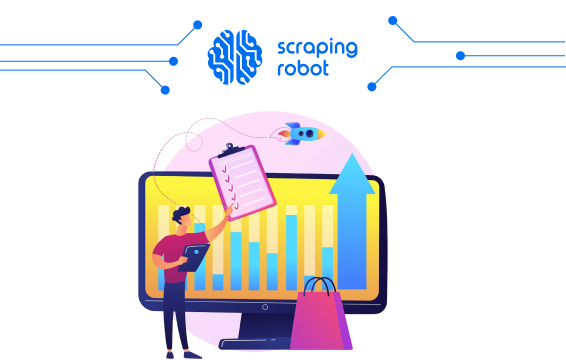BestBuy API Intelligence (How to Access Best Buy Data)

Data is a lot of things to a lot of people and a lot of businesses. Especially in the eCommerce realm, data is everything. To the business owner and to the customers. The mere act of perusing different brands of a particular product before choosing one in a store is a form of data analysis. When it is an online store like Best Buy, one of the largest online retailers in the world, the value of proper data availability and analysis multiplies tenfold. Imagine if you had to manually search through catalogs, explore product categories by hand and write down SKUs before you can make a cost-vs-efficiency analysis of the different brands of products you need. You wouldn’t want to go back, would you? Me neither. That is where a BestBuy API comes in.
An API is an application communication interface. Basically, it allows two or more pieces of software to communicate. Utilizing a BestBuy API in your product search and data analysis of online brands helps you get access to very valuable datasets that can help you make better buying decisions as a consumer or make proper product-building decisions as a business owner looking to improve your products.
In this article, we’ll delve into the intricacies of what a BestBuy API does, BestBuy API examples, how to use BestBuy API, and the different categories of data you can access using BestBuy APIs.
Table of Contents
1. Exploring the BestBuy Inventory With an API
Exploring the BestBuy Inventory With an API

The inventory of an online store like BestBuy offers a lot of value, to you as a businessman looking to expand his eCommerce store, build a better product based on existing options, or as a consumer looking to get more informed about the available options for products in a particular niche. But in an online store where a single product category can have up to a thousand entries, how do you successfully identify and analyze the products relevant to your needs?
Imagine you went to a physical store the size of 3 football fields, for the first time. And at the door, there is no guide, no storekeeper, not even a cleaner to ask for directions to the shoe section. So you have to walk down each aisle and look for that section where the shoes are kept. Think you’ll come back to that store? Me neither. An API is what serves as your guide, receptionist, map, and errand boy to help you navigate the thousands of products present on an online store, locate the data you want, and extract it.
API functionality
Now, you are probably thinking, don’t I have to have 3 degrees in programming and genius-level coding skills to use an API? Uhm, no you don’t. In fact, you use APIs almost every day in the course of navigating the internet. For example, when you use your Google account details to sign in to your social media account, what you have done is set up a communication between the social media site and Google using their respective APIs.
Using an API in an online store like BestBuy offers the same level of functionality. It allows you to explore the store’s inventory to a depth that would be close to impossible manually, collating and analyzing product data en masse and even funneling it to external software or database for further analysis or use. The best part, it allows you to do all this with minimal manual input from you.
How to use BestBuy API
The BestBuy website comes with an internal search engine built to help you navigate the store’s numerous pages and categories. This search engine serves much like a cargo train that conveys data from the inventory to the front-end of the website where it is displayed to you. The database where the inventory is kept serves as the loading platform. However, the cargo does not just go into the train. There has to be communication between the train and the loading platform.
That is where our API comes in (remember an API allows communication between pieces of software). Not just that, with the right API and the right settings, you can direct the cargo (the inventory data) to an external train (your own software) which takes it to your preferred destination where you can calmly analyze and utilize the extracted data.
BestBuy API Examples

Depending on your exact data needs, BestBuy APIs can come in different formats. However, the method of operation of the different examples of BestBuy API still follows the same basic principle. Using BestBuy APIs offers you access to a wide range of data across the BestBuy site. The access allows you to go through the entire catalog of products, tagging specific products for extraction of their data. The operation of the BestBuy API is timeless as you can view the catalog on both past and present products.
There’s a number of BestBuy API examples, which can be emulated or better still scraped using a web-scraping tool. They are:
- Recommendations API: This API works well with prospective buyers and ‘basket abandoners’ as well. In a marketplace where choice differs, this API helps to make relevant suggestions. This API presents trending or most-viewed products based on the customer’s behavior. As a consumer, this API shows you useful suggestions on the type of product category you are browsing. This helps to reduce your time spent browsing through catalogs. The best products are usually the trending and most-viewed ones and this is what this API shows you. As a business owner, this API can help show you the most popular products in your niche. This tells you the competitors you have to worry about the most.
- Buying Options API: When product information, reduced prices, and specific conditions are what is needed, this API grants access to BestBuy’s open-box inventory. All this information is made readily by this API and can be sent directly to your analytics software or database. If there is a widespread decrease in prices by your competitors, scraping data with this API will notify you, allowing you to adjust your own pricing strategy to match.
- Stores API: To gather data, the stores API gives access to the availability of products in stores. Asides from that, it also provides information on locations, addresses of all the available stores around. This BestBuy API gives you data on the products your competitors currently have available in their own inventory. Also, it helps you carry out market research if you are planning to open a new store in a new location.
- Categories API: The categories API affords the access to go through the different product categories. It also allows you to search for products based on a particular attribute. Product searches can be performed based on category names too. For example, if you are trying to find the number of sellers carrying toothpaste with fluoride in it, this API is what helps you get this data.
- Products API: This API provides you with timeless information on products, both current and present. The information provided includes the availability, specifications, pricing, description, and images. This type of BestBuy API is one of the most valuable. It helps you extract everything related to specific product data. This data can be put to so many uses and can help you inform marketing strategy, sales strategy, pricing strategy, and general business strategy.
All these BestBuy API examples can be combined into one multipurpose API or can be used individually to access the BestBuy inventory depending on the type of data you need.
All categories of data involved in the above-listed APIs are indispensable to customers. From providing variety down to the exact details of products, the data serves a pressing need.
Types of Datasets You Can Extract With a BestBuy API

With our explanation of the various examples of API for BestBuy above, you should already have an idea of the types of data that you can extract from the BestBuy inventory using an API. But let’s go a little deeper and list out the types of data you can expect to get with a BestBuy web scraper API.
- Pricing data: This one is quite straightforward. You can extract the prices of products, by niche, category, or type. You can also use the API to extract data on sudden changes in prices by a particular competitor or general price reductions in a particular niche.
- General product data: Apart from price, you can also extract general product data like the model, SKU, year of manufacture, expiry date (if it has one), components (ingredients), etc.
- Reviews data: You can use BestBuy APIs to extract reviews on products in a particular niche to see what people are saying about your competitors’ products or about a product you want to buy.
- Description data: Sometimes, you need to know the way your competitors are describing their products to the consumers, to inform your own strategy for describing your products, and avoid copywriting pitfalls that could harm your views.
These are some categories of data that you can easily extract en masse using a BestBuy API. Generally, with a BestBuy web scraper API, you can extract any and all publicly available inventory data on the platform.
A Better BestBuy Web Scraper

At Scraping Robot, we have developed a web scraping service that is unique (and really awesome). If it is on the internet and it is publicly available, we can collect it. Our public API can be integrated into absolutely any software and it’s well-documented, so you don’t have to call on a developer or programmer to use it.
We have an HTML scraper that can parse the HTML code of any website on the internet and extract data according to your needs. And if that does not fit your needs, you can get in touch with our developers to build a custom scraping solution for you. At $0.0018 per scrape, our service is the most affordable out there. And you get a whopping 5000 free scrapes when you sign up. We use strategically designed proxies from our partner company, Rayobyte, to give you a fast, efficient and awesome web scraping experience.
Final Thoughts

Using a BestBuy API allows you to conquer the inventory of one of the largest online retailers on the planet and extract valuable data that can help you turn around your business and make better, data-informed decisions. To get started collecting data to your heart’s content, get in touch with us at Scraping Robot today.
The information contained within this article, including information posted by official staff, guest-submitted material, message board postings, or other third-party material is presented solely for the purposes of education and furtherance of the knowledge of the reader. All trademarks used in this publication are hereby acknowledged as the property of their respective owners.
